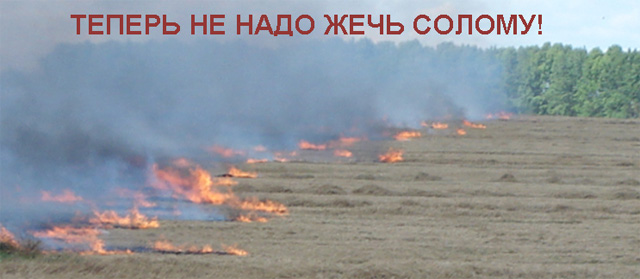Company production
Company production
BIOTECHNOLOGY FOR THE MANAGEMENT OF PLANT RESIDUE

.png)
The biotechnology is based on the process of treating plant residue (straw and stubble remains from grain crops, after-harvest residues of maize, sunflower, sugar beet, etc.) with the Risobakt SP (r.zh.f.t.n.) deoxid. MicoBact; it contains a growth medium that conduces more active work of microorganisms (cellulose- and lignin consuming bacteria, nitrogen extracting bacteria), which promotes biotransformation of plant residue into organic nutritives and humus.
Application of the MicoBact onto plant residue allows to both breake-up and structure it and to kill phytopathogenic and decay-causing microflora that hibernates on it.
РHow MicoBact works:
- 100% degradation of 1.5-2.0 metric tons per hectare of cereal straw;
- breaking up of the structure of stubble and straw, which ensures the even planting of seeds;
- Higher yields of after crops: an increase of 10-15% due to additional nutrition and a mulch layer preventing erosion and loss of moist, and suppressing the growth of weeds;
- 2-fold reduction of plant disease incidence due to driving the pathogenic and saprogenic microflora out;
- Increased humus content in soil, generation of dew-worms and useful microorganisms; prevention of one-way removal of nutritives from soil on monocultures;
- Saving money on nitrogen fertilizers that are used to degrade straw (10 kg per metric ton with conventional technologies).
Application rates and methods:
- Application rate for HUMIFICATOR with 2-4 metric tons of cereals' straw per hectare is as much as 2 liters per hectare. For degrading of crop residues of maize, sunflower, sugar beet and other tall-stalked grain and industrial crops, the application rate is to be increased up to 3,0-5,0 l/ha;
- The best consumption rate of the solution – 200-300 liters per hectare.